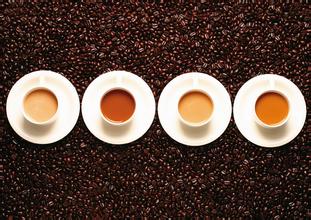Three Coffee categories and Seven Coffee producing areas-how many Coffee producing countries in the World
Robusta species:
The leaf rust-resistant varieties found in Congo in Africa have stronger disease resistance than Arabica. In fact, the Robusta species was originally a mutant of the Congolese species.
Arabica coffee beans grow in the cold tropical high-sea areas, and the high-temperature and humid zone that is not suitable for Arabica coffee is where Robsta coffee grows. Robusta species are commonly used in instant coffee (which extracts about twice as much liquid as Arabica), bottled coffee, liquid coffee and other industrial coffees. The content of caffeine is about 3.2%, much higher than 1.5% of Arabica species.
The main producing countries are Indonesia, Vietnam and West Africa with C ô te d'Ivoire, Algeria and Angola as the center.
Liberian species:
West Africa is the origin of coffee grown in Liberia. It has a strong ability to adapt to all kinds of environments, whether high or low temperature, humid or dry, except that it is not resistant to leaf rust and its flavor is worse than that of Arabica, so it is only traded in some West African countries (Libya, C ô te d'Ivoire, etc.). Or planted for research.
About 65% of the coffee in circulation in the world market is Alibika:
According to the statistics of ICO (International Coffee Organization), excluding the domestic transactions of coffee-producing countries, about 65% of the coffee in circulation in the world market is Arabica and 35% is robusta. Arabica species are characterized by slender and flat grains, while robusta coffee beans are more round.
But if you add in the hybrids of Arabica and robusta (for example, the mutant Colombian subspecies, which is the main variety of Colombian coffee, has a 1x4 robusta pedigree and is therefore resistant to leaf rust and has high yield) and its mutant secondary coffee beans, the classification will be more complicated. Some Arabica coffee beans are quite close to the native species, while others are similar to the Robusta species.

Important Notice :
前街咖啡 FrontStreet Coffee has moved to new addredd:
FrontStreet Coffee Address: 315,Donghua East Road,GuangZhou
Tel:020 38364473
- Prev

Introduction to the production area of grinding degree by taste treatment method for describing the flavor of Yejia snow coffee
Yejia Coffee Flavor describes general coffee varieties named after origin, while boutique coffee is more accurate in traceability. The name of this coffee can be explained as: this coffee is grown in Ethiopia, Yega, where it is grown, washed in Kochel's processing plant, and graded as first-grade coffee beans (hand-picked, very few defective beans). Plus: even here
- Next

What are the different coffee introductions for Starbucks in different countries?
At first, coffee was very expensive in Europe. Only aristocrats could drink coffee, and coffee was even called black gold. Until 1690, a Dutch captain sailed to Yemen and got some coffee seedlings, which were successfully planted in Indonesia. In 1727, the wife of a diplomat in Dutch Guiana gave some coffee seeds to a Spaniard in Brazil, where he tried to plant them.
Related
- What brand of black coffee is the most authentic and delicious? what are the characteristics of the flavor of the authentic Rose Summer Black Coffee?
- Introduction to the principle and characteristics of the correct use of mocha pot A detailed course of mocha pot brewing coffee is described in five steps.
- Which is better, decaf or regular coffee? how is decaf made?
- How much is a bag of four cat coffee?
- How about four Cat Coffee or Nestle Coffee? why is it a cheap scam?
- Which is better, Yunnan four Cats Coffee or Nestle Coffee? How about cat coffee? is it a fake scam? why is it so cheap?
- How about Cat Coffee? what grade is a hoax? which instant coffee tastes better, four Cat Coffee, Nestle Coffee or G7 coffee?
- Process flow chart of coffee making-Starbucks coffee making process what coffee tastes good at Starbucks
- The top ten best coffee beans in the world Rose summer coffee or Tanzanian coffee tastes good
- Yunnan four cat coffee is good to drink?_four cat coffee is a big brand? four cat blue mountain coffee is fake?

